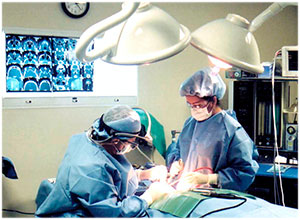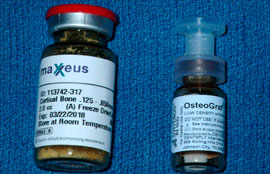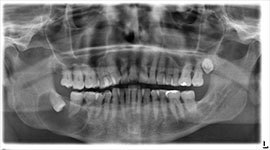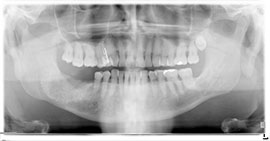
Bone grafting procedures are performed to restore the missing hard tissue support of the face and jaws. There are many types of bone grafts which are used to allow the oral and maxillofacial surgeon to reconstruct and restore the patient’s bone commonly lost by previous facial and/or oral conditions which might include things like cysts, infections, extractions as well as trauma.
Four different types of bone grafts exist. These include:
Autografts which constitute bone harvested from other areas of the patient’s own mouth or body, and collected in either large or small blocks or fragments, or chipped away and/or suctioned from areas within several different surgical sites. Although this type of graft is considered the gold standard for grafting because it transplants live tissue cells and has no risk of rejection, its major inconvenience is having to undergo a second surgical procedure for its procurement as well as the added risk of surgical complications at the donor site.
Alloplasts are grafts that have been made synthetically with either the same chemical formula as human bone, or into other chemically similar compounds that behave practically in the same manner as natural human bone. These are easily obtained through medical/dental manufactures and are sold with high quality production standards to ensure their safety as implantable materials. They have the advantage of not being able to transmit any infectious diseases, and although their potential for rejection is still possible it is almost never seen.
Allografts constitute bone grafts from the same species (i.e. humans) obtained from cadavers, processed by highly regulated and reputable tissue banks which treat and develop these grafts through strict standard methods of processing and sterilization making them reliable and safe to use. These grafts also have the potential of causing rejection, just like alloplasts, although highly unlikely because all bone proteinacious material is removed during their processing which is generally the reason as to why foreign body reactions occur. These generally are the fastest grafts to incorporate, but are also the ones that resorb the most during their consolidation into the recipient host bone.
Xenografts are bone grafts which are derived from bone of a different species. Bovine bone, derived for cows, is generally the main source of these grafts. This bone grafting material, just like allografts, has the same mineral matrix composition (exact chemical formula) as that of natural human bone but has a different crystalline structures. This graft incorporates a little slower than allografts but maintains more volume when it finally incorporates as compared to the allografts.
Depending on the bone graft type and need of reconstruction some of these procedures are required to be done in a hospital. Fortunately, most of the bone grafts can be done safely and reliably in an office setting as outpatient procedures. These grafts are most of the time done as adjunctive procedures in conjunction with or in addition to other procedures.
Dr. Díaz generally performs these grafting surgical procedures to provide the necessary lost hard tissue foundation in order for him to ensure proper placement of implants, or support other prosthetic teeth replacement methods like dentures.


